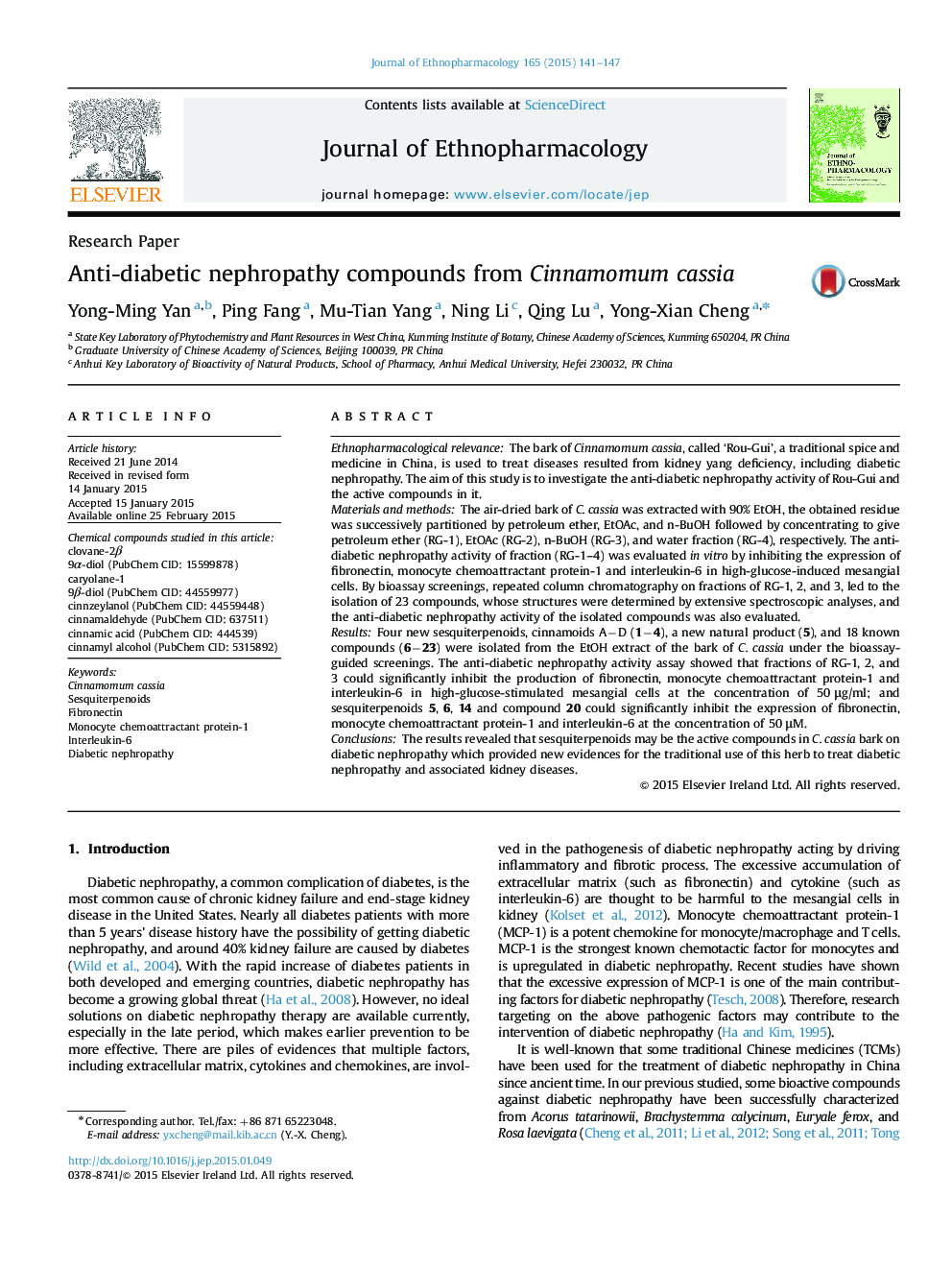| کد مقاله | کد نشریه | سال انتشار | مقاله انگلیسی | نسخه تمام متن |
|---|---|---|---|---|
| 2545064 | 1560397 | 2015 | 7 صفحه PDF | دانلود رایگان |

Ethnopharmacological relevanceThe bark of Cinnamomum cassia, called ‘Rou-Gui’, a traditional spice and medicine in China, is used to treat diseases resulted from kidney yang deficiency, including diabetic nephropathy. The aim of this study is to investigate the anti-diabetic nephropathy activity of Rou-Gui and the active compounds in it.Materials and methodsThe air-dried bark of C. cassia was extracted with 90% EtOH, the obtained residue was successively partitioned by petroleum ether, EtOAc, and n-BuOH followed by concentrating to give petroleum ether (RG-1), EtOAc (RG-2), n-BuOH (RG-3), and water fraction (RG-4), respectively. The anti-diabetic nephropathy activity of fraction (RG-1–4) was evaluated in vitro by inhibiting the expression of fibronectin, monocyte chemoattractant protein-1 and interleukin-6 in high-glucose-induced mesangial cells. By bioassay screenings, repeated column chromatography on fractions of RG-1, 2, and 3, led to the isolation of 23 compounds, whose structures were determined by extensive spectroscopic analyses, and the anti-diabetic nephropathy activity of the isolated compounds was also evaluated.ResultsFour new sesquiterpenoids, cinnamoids A−D (1−4), a new natural product (5), and 18 known compounds (6−23) were isolated from the EtOH extract of the bark of C. cassia under the bioassay-guided screenings. The anti-diabetic nephropathy activity assay showed that fractions of RG-1, 2, and 3 could significantly inhibit the production of fibronectin, monocyte chemoattractant protein-1 and interleukin-6 in high-glucose-stimulated mesangial cells at the concentration of 50 μg/ml; and sesquiterpenoids 5, 6, 14 and compound 20 could significantly inhibit the expression of fibronectin, monocyte chemoattractant protein-1 and interleukin-6 at the concentration of 50 μM.ConclusionsThe results revealed that sesquiterpenoids may be the active compounds in C. cassia bark on diabetic nephropathy which provided new evidences for the traditional use of this herb to treat diabetic nephropathy and associated kidney diseases.
Journal: Journal of Ethnopharmacology - Volume 165, 13 May 2015, Pages 141–147